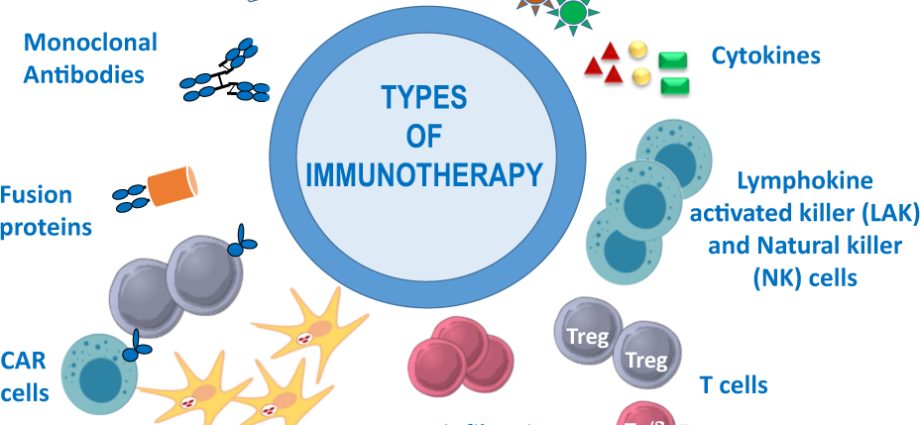Contents
Lymphocytes: Roles, Pathologies, Treatments
Lymphocytes are white blood cells (leukocytes) that play an important role in the immune system. They identify and neutralize pathogens present in the body.
Anatomy: the characteristics of lymphocytes
Number and size of lymphocytes
LLymphocytes are small cells. They are relatively numerous and represent between 20 and 40% of leukocytes circulating in the body.
Classification of different types of lymphocytes
There are generally three groups of lymphocytes:
- B lymphocytes ;
- T lymphocytes ;
- NK lymphocytes.
Synthesis and maturation of lymphocytes
The synthesis and maturation of lymphocytes takes place in two types of organs:
- primary lymphoid organs, of which the bone marrow and thymus are part;
- secondary lymphoid organs, or peripheral, which include in particular the spleen and lymph nodes.
Like all leukocytes, lymphocytes are synthesized within the bone marrow. They will then migrate to other lymphoid organs to continue their maturation. Differentiation of T lymphocytes takes place within the thymus while maturation of B lymphocytes takes place within secondary lymphoid organs.
Location and circulation of lymphocytes
Like red blood cells (red blood cells) and thrombocytes (platelets), lymphocytes can circulate in the blood. Like all leukocytes, they also have the particularity of being able to circulate in the lymph. Lymphocytes are also present at the level of primary and secondary lymphoid organs.
Physiology: immune functions of lymphocytes
Lymphocytes are white blood cells that play an important role in the immune system. Within the body, each type of lymphocyte performs a specific function to fight against pathogens.
Role of NK lymphocytes in the innate immune response
NK lymphocytes, or NK cells, are involved in the innate immune response, which is the body’s first response to attack by pathogens. The innate immune response is immediate and involves NK lymphocytes, whose role is to destroy damaged cells such as infected cells and cancer cells.
Roles of B and T lymphocytes in the adaptive immune response
B and T lymphocytes take part in the adaptive immune response. Unlike the innate immune response, this second phase of the immune response is called specific. Based on the recognition and memorization of pathogens, the adaptive immune response involves several leukocytes including:
- B cells that produce antibodies, complex proteins with the ability to specifically recognize and neutralize pathogens;
- T cells which recognize and destroy pathogens in a specific way.
Pathologies: the different lymphocyte abnormalities
The risk of autoimmune diseases
Autoimmune disease is caused by dysfunction of the B cells. In autoimmune disease, these cells produce antibodies that attack cells in the body.
There are different autoimmune diseases such as:
- rheumatoid arthritis ;
- multiple sclerosis ;
- type 1 diabetes.
The case of the Human Immunodeficiency Virus (HIV)
Responsible for the acquired immunodeficiency syndrome (AIDS), HIV is a pathogen that attacks immune cells, and particularly T lymphocytes. The latter can no longer play their defense role, which exposes the body to from opportunistic infections the consequences of which can be serious.
Cancers affecting lymphocytes
Lymphocytes can be affected by different cancers, especially when:
- lymphoma, cancer of the lymphatic system;
- a leukemia, cancer affecting cells in the bone marrow;
- a myeloma, hematologic cancer;
- Waldenström’s disease, a specific hematologic cancer that affects B lymphocytes.
Treatments and prevention
Prevention solutions
In particular, it is possible to prevent HIV infection, which has serious consequences for lymphocytes. Preventing AIDS begins with adequate protection during sexual intercourse.
Medical treatments
Medical treatment depends on the abnormality diagnosed. For example, in the event of HIV infection, antiretroviral-based treatments are offered. If a tumor is identified, chemotherapy or radiation therapy sessions can be performed.
Surgical intervention
In more serious cases, surgery may be necessary. In leukemia, a bone marrow transplant can in particular be implemented.
Diagnosis: the different lymphocyte examinations
Hemograms
A blood count makes it possible to carry out a qualitative and quantitative measurement of the elements present in the blood, including lymphocytes.
During this blood test, a lymphocyte level is considered normal if it is between 1,5 and 4 g / L.
Interpreting the results of the blood test can identify two types of lymphocyte abnormalities:
- low lymphocyte count, when it is less than 1 g / L, which is a sign of lymphopenia;
- high lymphocyte count, when it is greater than 5 g / L, which is a sign of lymphocytosis, also called hyperlymphocytosis.
Myelogram
A myelogram is to analyze the functioning of the bone marrow. It measures the production of white blood cells including lymphocytes.
Urine cytobacteriological examination (ECBU)
This test assesses the presence of white blood cells in the urine. A high level of white blood cells is a sign of a condition.
Anecdotes: the origin of lymphocyte classes
Origin of the B lymphocyte class
There are several interpretations for the letter “B”. Some believe that this name would be linked to the bone marrow, where B lymphocytes are produced. In English, the bone marrow is called “Bone marrow”. The second explanation, which seems the most true, would be related to the bursa of Fabricius, a primary lymphoid organ present in birds. It is at the level of this organ that B lymphocytes have been identified.
Origin of the T cell class
The origin of the letter “T” is simple. It refers to the thymus, the primary lymphoid organ where T lymphocyte maturation takes place.
Origin of the NK lymphocyte class
The letters “NK” are the initials in English for “Natural Killer”. This refers to the neutralizing action of NK lymphocytes.










